Previous lectures
2018 Gordon H. Brown Lecture
How to look at art in Aotearoa: Lessons from Māori experiments in cultural heritage 1920-40
by Ass Prof Conal McCarthy, Museum and Heritage Studies, Victoria University of Wellington
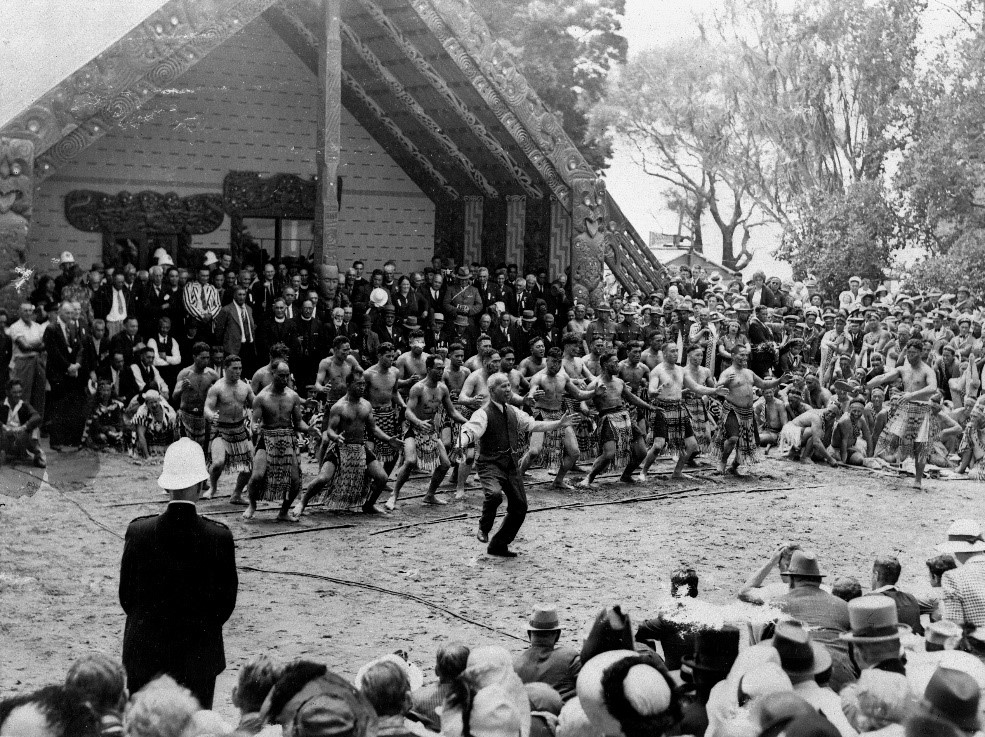 What are the lessons from Māori experiments in the visual and performing arts in the early 20th century? This lecture analysed a series of remarkable episodes when a wide range of cultural practices were mobilised by the Young Māori Party to advance claims for social and political development. It considered how, after the ‘ontological turn’, non-Western ways of being, knowing and doing may enrich the study, not just of global art history, but of visual and material culture more generally.
What are the lessons from Māori experiments in the visual and performing arts in the early 20th century? This lecture analysed a series of remarkable episodes when a wide range of cultural practices were mobilised by the Young Māori Party to advance claims for social and political development. It considered how, after the ‘ontological turn’, non-Western ways of being, knowing and doing may enrich the study, not just of global art history, but of visual and material culture more generally.
2017 Gordon H. Brown Lecture
The Promise of Art History: Towards a History of the Contemporary
by Christina Barton
Director of the Adam Art Gallery Te Pātaka Toi, Victoria University of Wellington
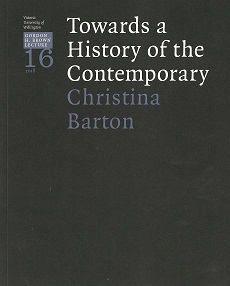 This lecture traversed a history of New Zealand art from 1969 to the present, focusing on specific works by a range of artists to argue a case for the discipline of art history as a valuable tool not only to read works of art but to understand the nature of our contemporary era. Drawing on her double life as an academic art historian and a working curator, Christina Barton touched on her many encounters with art and artists to map a different route through her times. Part polemic, part love song, her lecture modelled a critical and a personal way of thinking with and against the grain of established approaches to her topic.
This lecture traversed a history of New Zealand art from 1969 to the present, focusing on specific works by a range of artists to argue a case for the discipline of art history as a valuable tool not only to read works of art but to understand the nature of our contemporary era. Drawing on her double life as an academic art historian and a working curator, Christina Barton touched on her many encounters with art and artists to map a different route through her times. Part polemic, part love song, her lecture modelled a critical and a personal way of thinking with and against the grain of established approaches to her topic.
The book from this lecture is now available at a cost of $15 from art-history@vuw.ac.nz.
Christina Barton is director of the Adam Art Gallery Te Pātaka Toi at Victoria University of Wellington, where she has been integral to the teaching of Art History since her appointment to the programme in 1995.
2016 Gordon H Brown Lecture
London Calling: Settler and Indigenous Artists, Artistic De-colonisation, and the British Art World, the 2016 lecture, was given by Damian Skinner, Art historian and curator of Applied Art and Design, Auckland War Memorial Museum Tāmaki Paenga Hira, in November 2016.
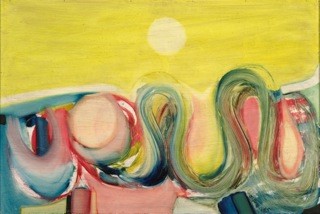
In the years following WWII, a generation of artists moved from England’s colonies to London to pursue their artistic practices as modernists. Indian, African and Caribbean artists challenged the hierarchies of colonialism and modernism by becoming practitioners rather than the subjects of modernism. This moment, named New Commonwealth Internationalism, also involved artists from the ‘white dominions’ and settler-colonial societies of Aotearoa New Zealand, Australia and Canada. Their legacy complicates the way both British and New Zealand art history of this period can be written, and the ways in which artistic modernism was caught up in the wave of decolonisation in the middle of the twentieth century.
The book from this lecture is now available.
2015 Gordon H. Brown Lecture
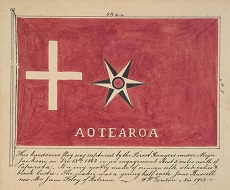
Unsettling: Art and the New Zealand Wars, the 2015 Gordon H. Brown lecture, was given by Rebecca Rice, Curator Historical New Zealand Art, Museum of New Zealand Te Papa Tongarewa, on 12 November, 2015.
This lecture revisited institutional practices of collecting and exhibiting, past and present, to reflect upon the histories of remembering and forgetting embodied by art from the time of the New Zealand Wars.
2014 Gordon H. Brown Lecture

A Critique of the Natural Artefact: anthropology, art and museology was given by Nicholas Thomas, Director, Museum of Archaeology and Anthropology, Cambridge, U.K, in December 2014.
The lecture reflected on the constitution of collections, and in particular on collections of indigenous artefacts, proposing that the museum has the capacity to constitute a 'method' that can empower the interpretation of this kind of art.
2013 Gordon H. Brown Lecture
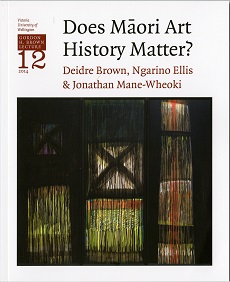
Does Māori Art History Matter? was the title of the 2013 lecture delivered by Deidre Brown (Ngāpuhi, Ngāti Kahu) School of Architecture, University of Auckland, Ngarino Ellis (Ngāpuhi, Ngāti Porou) Department of Art History, University of Auckland and Jonathan Mane-Wheoki (Ngāpuhi, Te Aupōuri, Ngāti Kuri) Elam School of Fine Arts, University of Auckland.
Although Māori art has long been acknowledged as one of the world’s great art traditions, no comprehensive history of this tradition has yet been written. In this context, we propose a radical shift towards a new Māori art ‘historiography’ that extends the ‘scope, method and vision’ of standard art history practice. This address discussed how earlier assumptions about time and periodisation have shaped perceptions and misconceptions about the cultural relevance, collection and presentation of Māori art.
2012 Gordon H. Brown Lecture
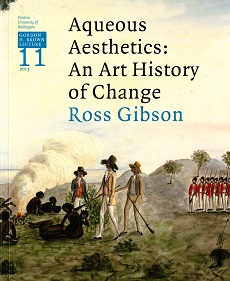
Oceans in Mind, Art Histories in Flux was the title of the eleventh Gordon H. Brown Lecture delivered on 15 November by Ross Gibson, Professor of Contemporary Arts at the University of Sydney. Beginning with an examination of the encounters of European voyagers with the South Pacific in the eighteenth century, this lecture asked how histories of Oceanic intelligence might now be legitimately used by artists and others to better understand our contemporary world.
2011 Gordon H. Brown Lecture
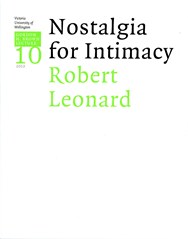
Robert Leonard, Director of the Institute of Modern Art, Brisbane, delivered the tenth Gordon H. Brown Lecture Love is a Battlefield/Nostalgia for Intimacy on Saturday 26 November at the City Gallery, Wellington.
Leonard poses that New Zealand art was once a small, enclosed scene—an intimate discourse. As the scene grows and becomes more international, it becomes less intimate. He asks, considering the impact of social scale: What are the implications for 'New Zealand art'?
Robert Leonard is Director of the Institute of Modern Art, Brisbane.
2010 Gordon H. Brown Lecture
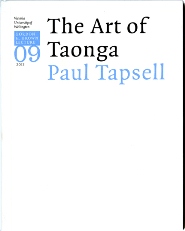
In the Maori World, taonga and stories are intimately connected. Be it a song or a weapon, a painting or a cloak, taonga open doorways to ancestral imaginings of time and place. But what happens when the resources that define taonga are appropriated by another value system, and recast in terms of ownership rather than belonging? What stories are then attached to taonga, so many of which are commoditised along with the landscapes to which they relate?
In The Art of Taonga, Paul Tapsell takes us on a journey from the time of Tupaea, a traveller on Cook's Endeavour in 1769, to today. He surveys the changing meanings of taonga, including the re-engagement by source communities with their ancestral treasures, arguing that rather than being fixed in the past, the dynamic concept of taonga always responds to changing contexts and conditions. Acknowledging the crisis facing marae communities, and the concurrent dislocation of urban Maori, Tapsell interrogates the precarious future of a guiding tradition that reaches back to ancestral Hawaiki.
Paul Tapsell is Professor of Māori Studies and Dean of Te Tumu, the School of Māori, Pacific and Indigenous Studies at the University of Otago. He is the author of the prize-winning Pukaki: A Comet Returns (2000), Ko Tawa: Māori Treasures of New Zealand (2006) and many scholarly essays on taonga and their place in the Māori world.
2009 Gordon H. Brown Lecture
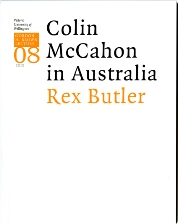
Colin McCahon in Australia is an intriguing new response to Colin McCahon, New Zealand’s most important modernist artist, by acclaimed Australian art historian, Rex Butler. Butler’s argument, builds on the idea that the ultimate meaning of McCahon’s work lies not in what he intended for it, but rather how his ideas are taken up by later generations. Referring to the work of visual artists such as Scott Redford and Geoff Newton and the novelist Peter Carey, Butler offers a powerful new way of thinking about the prophetic character of McCahon’s painting. By exploring what he calls the ‘afterlife’ of McCahon’s work, Butler shows us how not just McCahon’s , but all great art, functions as a kind of material and spiritual ‘leap of faith’. His text will make us think differently about the achievements of New Zealand’s greatest artist, but it also invites us to re-envisage the nature of great art in general.
Rex Butler is Associate Professor in Art History at the University of Queensland. He is well known as a contemporary art critic and writer and has published a number of books on critical theory (Jean Baudrillard: The Defence of the Real, 1999; Slavoj Žižek: Live Theory, 2005; Borges’ Short Stories, 2010) and written and edited various books on Australian art (A Secret History of Australian Art, 2002 and Radical Revisionism, 2005).
2008 Gordon H. Brown Lecture
The 2008 Gordon H. Brown Lecture, Displaced Legacies, European Art in New Zealand's Public Collection, was delivered by Mary Kisler, Mackelvie Trust Curator International Art at Auckland Art Gallery Toi o Tamaki.
This lecture was not published.
2007 Gordon H. Brown Lecture
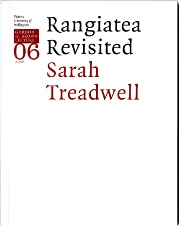
Revisiting Rangiatea is a fascinating reconsideration by leading architectural historian and theorist Sarah Treadwell of the historic Maori church built at Otaki between 1848 and 1851 by local iwi, Ngati Toa, Ngati Raukawa, Te Ati Awa. Through a careful re-reading of the evolving history of the structure (including its reconstruction after it was destroyed by fire in 1995) and its various visual and textual representations, Treadwell explores how the building has gained its meaning within a history of colonial and postcolonial cultural production.
Her argument models a new way of thinking about architectural heritage, in which the physical preservation of an actual building matters no more than its survival and reinvention across the entire field of representation, to convey a refreshing new vision of architecture as multiple, sequential and renewable. For Treadwell, Rangiatea exists in built form, but also in prints, drawings, photographs, and written accounts, as a space where the principles of western architecture are both invoked and undone. In this her text serves as an exemplary postcolonial re-reading that aptly fits the format of the annual Gordon H. Brown Lecture.
Sarah Treadwell is Senior Lecturer in Architecture at the University of Auckland’s School of Architecture and Planning, whose work entails the examination of visual representations as the basis for her study of colonial architecture in New Zealand and the Pacific.
2006 Gordon H. Brown Lecture
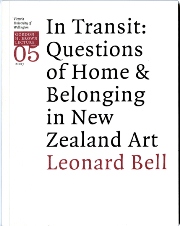
What does it mean when an artist has exchanged one home for another? This question is central to In Transit: Questions of Home and Belonging in New Zealand Art, in which Leonard Bell explores the work of two artists, expatriate painter Douglas MacDiarmid, who left New Zealand for France, and photographer Marti Frielander, an immigrant to New Zealand. Bells’ nuanced readings place these artists within a wider frame, one where displacement can be recognised as a prime driver of creativity. Bell argues, furthermore, that this type of work is ambiguous by nature and apt to be ignored or misinterpreted by the nationalist lens through which New Zealand’s canon of art has been filtered.
Leonard Bell is an acclaimed specialist in the field of cross-cultural interactions and representations in New Zealand. He has investigated nineteenth-century colonial traditions as well as the work of twentieth-century European refugees. Currently Associate Professor of Art History at the University of Auckland, Bell is fascinated by the ways in which considerations of displacement and migration can shed fresh insights into the trajectories of New Zealand art history.
2005 Gordon H. Brown Lecture
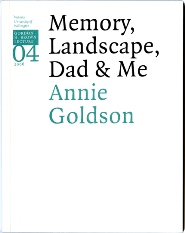
Memory, Landscape, Dad & Me is Annie Goldson’s thoughtful account of her 1994 experimental documentary film Wake, which explores her family’s experience of immigrating to New Zealand in the 1960s. This film offers a personal encounter with a new home, but it also serves as an instance of our common history. By weaving together her father’s home movies with nineteenth-century watercolour depictions and her own documentary footage, Goldson produces a powerfully evocative film that raises issues about New Zealand’s history, its landscapes and its people. Her considered account of this project is an exemplary instance of postcolonial theory and practice that will be of interest to all who share a desire to understand the complex links between history, memory and representation. Readers are also able to view Wake, as a limited-edition DVD version of the film has been specially produced to accompany this publication.
Annie Goldson is an acclaimed documentary filmmaker. Since Wake, Goldson has produced and/or directed six films: Seeing Red; Punitive Damage; Georgie Girl; Sheilas: 28 Years On; Pacific Solution: From Afghanistan to Aotearoa; and the newly completed Elgar’s Enigma: Biography of a Concerto. Goldson is also a writer and teacher. She is Associate Professor in Film, Television and Media Studies at the University of Auckland.
2004 Gordon H. Brown Lecture
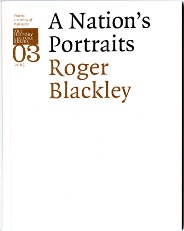
A Nation’s Portraits, by Roger Blackley, offers fascinating insights into a history of portraiture in New Zealand. Rather than restricting himself to an examination of elite portraits in national repositories, he explores a range of historical and contemporary venues, from the window displays of nineteenth-century photography studios to Henry Partridge’s Lindauer Art Gallery of Maori portraits on Auckland’s Queen Street, to the hallowed halls of Parliament and the busy corridors of his own university. His purpose here is to ask probing questions about the place of New Zealand’s rich heritage of official and unofficial portraits. As a result, Blackley has made a timely and relevant contribution to the historical task of examining art’s vital role in shaping the nation.
Roger Blackley is a leading historian of colonial art. He is the author of Goldie, published in 1997 on the occasion of Auckland Art Gallery’s major exhibition of Charles F. Goldie’s paintings. Currently Senior Lecturer in Art history at Victoria University of Wellington, he continues to research, teach, write on and curate aspects of colonial New Zealand art.
2003 Gordon H. Brown Lecture
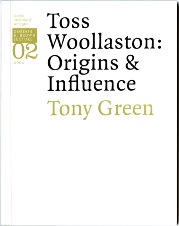
Toss Woollaston: Origins and Influence, by Tony Green, is a timely re-evaluation of an artist widely considered to be a key figure in modern New Zealand art history. Green offers a probing critique of existing literature on Woollaston and fresh interpretations that will do much to provide a more accurate and deeper picture of a figure ripe for more critical attention. The book is a vital new contribution to scholarship on the artist that sets out to both answer questions and to pose fresh ones.
Tony Green was the founding Professor of Art History at the University of Auckland (1969-1998). He is an art historian, writer, curator and critic, who has published widely on the history of modern art in New Zealand. Amongst other things he has recently published a book on the paintings and writings of French 17th-century artist Nicholas Poussin.
2002 Gordon H. Brown Lecture
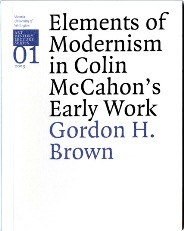
Elements of Modernism in Colin McCohn’s Early Work, by the eminent art historian Gordon H. Brown, explores the art of Colin McCahon prior to 1947, to explain the exact nature of his engagement with modernist principles and practices. Through the careful analysis of selected works and drawing on his extensive knowledge of McCahon’s life and letters, Brown offers rare insights into the artist’s sources, working processes and attitudes. This book is a vital addition to the critical appraisal of Colin McCahon, New Zealand’s most important twentieth-century artist.
Gordon H. Brown is an artist, writer, curator and critic. His publications include An Introduction to New Zealand Painting 1969, 1982 (with Hamish Keith); Colin McCahon: Artist 1984; and Visions of New Zealand: Artists in a New Land 1988. In 1989 he was awarded an OBE for his contribution to art history in New Zealand.
Publications
If you would like to order any of the Gordon H. Brown publications please email:art-history@vuw.ac.nz
Prices:
- Individual books (1 - 6, 8 - 11) $5 each
- Set of 10 (Nos 1 – 6, 8 –11) $45 (No 7 not published)
- No 12: Does Māori Art History Matter? $15 per copy
- No 13: A Critique of the Natural Artefact: Anthropology, Art & Museology $15 per copy
- No 14: Unsettling: Art and the New Zealand Wars, $15 per copy
- No 15: London Calling $15 per copy
- No 16: Towards a History of the Contemporary $15 per copy
Postage and packing: 1-2 books $2.00, more than 2 books $4.00
